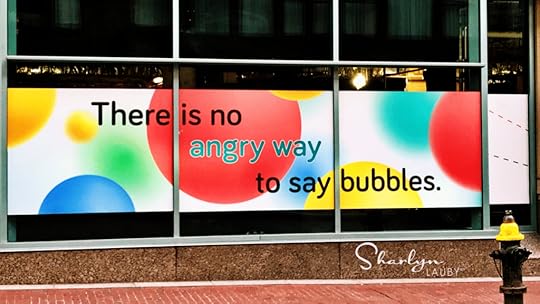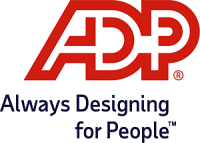Sharlyn J. Lauby's Blog, page 67
June 3, 2021
10 Rules for Video Call Etiquette for Business

Estimated reading time: 5 minutes
I don’t need to produce any statistics to convince you that video calls are popular. Over the past year, the use of video call technology has grown exponentially – to the point where we actually have video call fatigue.
Personally, I think one of the reasons that we have video call fatigue is because we haven’t developed any universally accepted rules or etiquette. Video calls aren’t going away any time soon. Even when we start traveling and going into the office, video calls are still going to be a regular occurrence. Maybe not as much as today, but we will still be using them.
So, I thought it might be helpful to create a list of rules for video calls. If you see one that I missed, be sure to drop it in the comments. Hopefully this can become a resource for organizations.
PRIOR TO THE CALL
When scheduling, let participants know if it will be a video call, if they will be on camera, and if the session will be recorded. Many people use video call software platforms for voice-to-voice calls. If the expectation is to use the video feature, tell participants. And please please please stop the last minute “Oh, let’s all turn our cameras on! And you don’t mind if I record this, do you?” Share in advance the expected level of participation and allow everyone to prepare.
Test your equipment. I’m sure organizations have a preferred reliable platform for video calls, but it’s still a good idea to do a quick microphone and video check before going live. I recently discovered that my headphones were acting funny through a mic check and I was able to fix them before the call. Better than trying to deal with it during the call.
Remember lighting and backgrounds. My office has great lighting, but I still find that a ring light helps. And we’ve discussed this before – make sure your background looks the way you want it to. I’ve heard stories of some very weird and inappropriate things in the background of video calls. You do not want to be the topic of conversation for your questionable video background. Trust me on this one.
Consider your attire. I don’t want to turn this into a conversation about wearing pants. I’d like to think we’ve all figured that one out by now. Keep in mind that in the future, you might be doing video calls at your company’s workspace. Remember that solid colors are better on video than patterns. Again, you want participants to remember what you said not what you were wearing.
DURING THE CALL
Use good meeting etiquette. I like to think of video calls as a form of meeting. We should remember all of the rules of conducting a good meeting. Even if it’s a one-on-one meeting. Have an agenda. Start and end on time. Take notes. Do a quick recap at the end outlining what was accomplished.
Mute yourself when you won’t be speaking for a while. There are often points in calls when someone is giving a presentation. During these times, participants should mute themselves, so the background noise doesn’t come through to the call. And if you’re a meeting organizer, feel free to tell people they can put themselves on mute. “Leonard is going to present the Q2 sales results. Feel free to mute yourself during his report and then we’ll unmute for questions.”
Use the chat feature, if available. Most video call platforms include a chat feature. This can be a really helpful way for participants to ask a question or make a comment during calls. One word of caution: the chat feature shouldn’t turn into a backchannel. That could become distracting and potentially derail the call.
Try not to multi-task. It can be very tempting to multi-task during conference calls. The same temptations exist with video calls. We need to train ourselves to stay engaged and a part of the conversation.
AFTER THE CALL
Make sure the call is completed. Some video call platforms are still open even after the call has ended. This could be problematic, and I don’t need to explain the reasons why. I’m sure you’ve read stories. Making sure the call is completed is just a good practice to get into.
Reset your privacy and security settings. We’ve all seen articles about security breaches during video calls. Because video call software requires you to give permission to use the microphone and video camera on your computer, it could make some sense to disconnect those permissions after the call. I realize this is an extra step each time, but a little peace of mind might be worth it.
Now that we’ve discovered the advantages to video calls, organizations are going to continue to use them. Granted, they need to be used at the right time and for the right reasons. If we all get better at using video call etiquette, maybe we can reduce some of the fatigue and burnout and focus on the content of the call. Which is the benefit of video calls in the first place.
Image captured by Sharlyn Lauby after speaking at the SHRM Annual Conference in Washington, DC
The post 10 Rules for Video Call Etiquette for Business appeared first on hr bartender.






June 1, 2021
Interview Skills Training: Now Is a Good Time to Give Managers a Refresher

Estimated reading time: 6 minutes
(Editor’s Note: Today’s article is brought to you by our friends at HRdirect, a trusted source for employee-related compliance, administration, and motivation tools. They serve as a one-stop shop to make employee management easier. Enjoy the read!)
As more organizations turn their focus toward economic recovery, they will also want to focus on having the right employees. A few weeks ago, we talked about the importance of compliance – especially applicant postings – when it comes to recruitment. But it’s equally important to talk about one of the most visible and time-consuming steps in the hiring process – the interview.
I know the labor market has been all over the place the past couple of years, but I think it would be fair to say that the average time to fill an open position is at least 6 weeks, with over half of that time being related to interviewing. Here’s a quick (but realistic) breakdown:
HR and hiring manager meet to discuss job requirements during intake interview (.5 week)HR works on sourcing and screening candidates (1.5 weeks)Hiring manager interviews candidates (2-3 weeks)HR and hiring manager conduct background checks and make final candidate selection (1 week)Candidate considers and accepts offer (.5 week)Candidate resigns, works out notice period, and then starts (2 weeks)I know many organizations are faced with quite a few job openings right now. And other organizations are looking to build their candidate pipelines in anticipation of future hiring needs. This could be a perfect time to do an interview skills training refresher for hiring managers.
It’s easy to overlook a refresher session for interview skills training because we often refer to an interview as simply a “conversation”. And while that’s true, we can’t make the assumption that interview conversations are easy or that they don’t require planning. An interview skills training refresher is an opportunity to do three things.
If you’ve been holding off on training for the past few months, a refresher session could be a way to provide new hiring managers with a mini training prior to attending the “in-depth” training program (scheduled for a later time).There are managers who haven’t conducted an interview in months. A mini session would allow them to refresh their skills in a safe environment. Don’t assume that managers wouldn’t be open to this. They might be reluctant to go to HR for fear that they will be judged as “not paying attention” during the original interview skills training program that happened a few years ago.And for everyone in the company, it ensures that hiring managers and HR are on the same page when it comes to the hiring process. Better to confirm the details early rather than holding up an offer to an excellent candidate later.3 Topics for an Interview Skills Training RefresherRefresher training isn’t supposed to be the full training session. Organizations need to prioritize what will be included. Here are 3 topics to consider including in an interview skills refresher training session.
TOPIC #1 – Don’t skip the recruiting strategy meeting (aka the “intake” meeting). This is the meeting between HR and the hiring manager about the job. It covers not only the job requirements, but also what sourcing strategy will be used to fill the position. The intake meeting is also a good time to remind hiring managers about the importance of the candidate experience.
For example, I’m seeing an increasing number of organizations displaying posters that express their commitment to inclusiveness and belonging. The interview conversation allows the manager to turn those words on the poster into reality. Candidates want to know that they feel welcome at work and can be themselves.
Even when the organization has positions that they regularly recruit, the intake meeting is an opportunity to ensure that HR and the hiring manager are on the same page. Because when they’re not, it can create delays in hiring. And those delays are costly.
TOPIC #2 – Remember to ask compliant and effective interview questions. Behavioral interviewing questions are commonly used to gain insights into a candidate’s previous experience. The way to craft a behavioral interview question is using the STAR Method. STAR is an acronym that stands for situation, task, action, and results.
For example, if the hiring manager says “Tell me about a time when you calmed an angry customer.” Then we want to hear (S) what the situation was, (T) what the task was you had to complete, (A) what action you took, and finally (R) what was the end result. Not only can the STAR Method be used to write behavioral interviewing questions, but it can also help interviewers make sure they hear the complete story from a candidate. Using the example above, if the candidate explains the situation, the task, and the action, but forgets to share the result, then the interviewer can say, “Thanks for sharing. And what was the final outcome?”
Reminding everyone of the purpose of asking good (and legal!) questions as well as follow up questions will provide the right information to make the best hiring decision.
TOPIC #3 – Take time to select the best candidate. One of the challenges that recruiters and hiring managers face during the hiring process is being able to move past their biases to select the best candidate for the job. Organizations need to provide managers with education that will help them recognize their unconscious biases and provide steps for overcoming them.

Our friends at HRdirect offer an online training program called “Diversity & Inclusion at Work: Unconscious Bias Training for Employees”. This program – which can also be used as part of the organization’s diversity, equity, and inclusion (DE&I) efforts – is focused on understanding and overcoming unconscious bias. The program is offered in two formats: one that’s compatible with your organization’s learning management system (LMS) and the other is a web-based version. The entire training is self-paced, approximately 30 minutes, and delivered in 3 microlearning modules. There’s also quiz at the end of each module to reinforce the learning.
In my work experience, I’ve seen hiring managers rush through the hiring process because they need to fill the opening asap. It’s important to make sure that when we’re trying to do things quickly, we don’t let our biases negatively impact the outcome.
An Organized Recruiting Strategy Will Benefit the Interview ProcessOrganizations cannot afford to have a disorganized recruitment strategy right now. Because if they do, the result will be that the best talent gets hired by the competition. Find time to give everyone involved in the recruitment process a refresher focused on the three key components of excellent hiring: 1) having an understanding of the job you’re recruiting for, 2) doing a thorough job of interviewing candidates, and 3) selecting the most qualified person for the job. The organization will see immediate benefits for it.
P.S. If you would like to learn more about how the organization’s DE&I efforts can prevent costly and time-consuming discrimination claims, watch this on-demand webinar focused on “Diversity, Inclusion & Bias in the Workplace: Legal and Practical Guidelines for Today’s Employers”. Creating a work environment where every employee feels respected and included is good for everyone.
The post Interview Skills Training: Now Is a Good Time to Give Managers a Refresher appeared first on hr bartender.






May 27, 2021
Bookmark This! Self Management for Remote Workers

Estimated reading time: 3 minutes
While we’ve been spending a lot of time talking about when employees will be returning to the office, it’s important to realize that some employees might not. Over the past year, organizations and individuals have discovered that employees can work from home and be very productive. They’ve realized that company culture doesn’t revolve around where employees are doing their work.
But for employers and their employees who are planning to continue to work remotely, this could be a good time to make sure that the workforce well equipped for the new normal. I believe it starts with knowing how to self manage. Here are a few articles on the subject that could be helpful in the self management journey.
Stepping back to assess and evaluate our strengths, weaknesses, and productivity is a valuable exercise for both our professional and personal lives. It allows us to keep focused and positioned to adapt as necessary. We can share this information with coworkers and family members so we can be our best selves at work and at home. And during those times when life is unexpected or challenging, we can draw from this information to manage ourselves well.
There are many different ways to earn a living. We can spend years trying to figure out the right career. Finding the way that’s right for you is key. Being a successful worker is about being productive with a little self management help. Knowing the exact recipe for making that happen will drive you to maintain a high level of productivity no matter where you are.
Part 3, Being a Part of the Solution
When we work remotely, we have to work through our problems on our own. In an office environment, we can leave our office or cubicle and find someone to talk to or help us figure out a solution. While we can do that to some extent working from home or the local coffee shop, it’s not the same. It’s not as easy to just pick up the phone and chat with a co-worker.
Part 4, Managing Personality Conflicts
A key component to resolving conflict is understanding ourselves and self management is a key driver. When we can use the information that we know about ourselves to step outside of conflict, we can begin a dialogue and work toward resolving the matter.
In today’s work environment, it’s important to understand that we as individuals are in control of our professional development. And what better way to drive your career than by establishing your own development plan and on your own terms. Self management can help us understand how we like to learn and the best way to learn the information.
Whether we work in an office or remotely, today’s workplaces are becoming more social which, in turn, means they are becoming more personal. If we want to solve the business challenges of the future, the first step is being able to self-manage. The more we can manage to change, the greater our personal and professional potential.
All of us – organizations and individuals – want productivity. Companies want it because it benefits the bottom line. Individuals want it because it creates engagement and accomplishing goals feels good. Spending time to reflect on self management is good for us regardless of where we work. But as more organizations and individuals discuss and plan for short- and long-term remote working arrangements, it’s even more important than ever.
The post Bookmark This! Self Management for Remote Workers appeared first on hr bartender.






May 25, 2021
Employee Wellbeing Should Be Part of Your Organization’s Employment Brand

Estimated reading time: 5 minutes
(Editor’s Note: Today’s article is brought to you by SentryHealth , a health and wellbeing management company focused on personalized, full-service solutions. Check out their 2021 Employee Health and Wellbeing Outlook Report , which reveals the effect of COVID-19 on employee wellbeing. Thanks for reading!)
We’ve all seen the articles predicting an “employee turnover tsunami” as the pandemic ends. But this doesn’t mean that organizations are predestined for this situation. As organizations focus on the future, it’s important to think about their employees and employment brand.
Organizations should ask themselves, “What do we want to be known for when it comes to the employee experience?”
The answer to that question will be the driver for how organizations hire, engage, and retain the best talent. Which in turn helps them to achieve their goals. One way to look at creating and maintaining an employment brand is to think of it in terms of the employee value proposition (EVP). The EVP represents all of those things that employees receive by working at your organization. It includes all of the things you would expect:
Rewards: Let’s start with the obvious. The EVP includes employee compensation, benefits, and perks. It also includes how organizations choose to give out compensation, benefits, and perks in terms of employee rewards and recognition programs.
Learning: This is about employee performance. Employees want to know that they will receive training for the jobs they have and development for future opportunities. They want to know that their goals are challenging but attainable. And they want to know their performance will be evaluated fairly.
Wellbeing: While employees aren’t afraid of hard work, they do want to have a life. They want to know that they can take off work when they need to, and their job isn’t at risk when they do. Employees want to know that they work for a company that realizes employee wellness helps individuals do their best work.
Organization: Employees want to work for organizations that they’re proud of. They want to know that the organization hires and promotes quality managers and leaders. Employees want to work at companies that realize giving back to the community is good for everyone.
Today, I want to focus on one aspect of the EVP – employee benefits. Because honestly, sometimes organizations don’t promote their benefit packages as much or as early as they should. Sometimes companies wait and talk about benefits at the time they extend a job offer or during orientation. Or sometimes they wait until after an employee has been around for a few weeks or months to mention that there’s a benefit available.
Employees Want Wellbeing BenefitsIt’s time for organizations to think about promoting their employee benefit package earlier. A study on the Society for Human Resource Management (SHRM) website said that 62% of employees were willing to consider a lower salary in exchange for better benefits. Of course, I’m not suggesting that organizations not offer candidates a competitive salary. But I am reminding us that benefits are a big factor in a job seeker’s decision. So, it makes some sense to spend additional time promoting the value of the company’s benefits package.
This is especially true with benefits that have a proactive quality to them, like the ones that are aligned with wellness and wellbeing. While wellness programs have been around for decades, I think it’s fair to say that they’ve received increased attention lately. A recent Gallup survey said that the top two things that employees – regardless of age – look for in an employer is 1) The organization cares about employees’ wellbeing and 2) The organization’s leadership is ethical.
I recently learned about SentryHealth’s wellbeing solution called WellOnMyWay. This solution brings together the three key ingredients to a successful wellbeing program.
Program personalization based on the information employees provide in a health assessment, biometric screenings, health care claims data, prescription data, and more.Technology capabilities that enable employees to have anytime, anywhere access to their benefits. It can connect with other health apps like Apple Health, Fitbit, and Garmin to help employees track activities, participate in challenges, and seek help when needed.User engagement by tracking progress toward goals, participating in challenges, and redeeming rewards. WellOnMyWay provides a full-service, holistic approach including physical health, mental health, emotional health, and financial wellness.
One of the things that I like about SentryHealth’s WellOnMyWay is that everything is in one place. As an employee, I can look at my wellbeing dashboard and decide what I want to prioritize. And if I’m unsure, WellOnMyWay can guide, encourage, and support me through that decision making process. We all know that if we set too many goals for ourselves, we run the risk of becoming overwhelmed, frustrated, and ultimately, not accomplishing anything. This doesn’t help me or the organization.
From the HR perspective, I know some people might be saying, “This is great, and we would love to offer this to our employees. But HR doesn’t have time to manage it.” Good news! SentryHealth takes care of communications, outreach, and incentives. HR teams will receive regular insights and trends to make sure the program is meeting goals and assist with future program adjustments and/or enhancements. SentryHealth also consults with HR teams and their benefits brokers to create strategies that will optimize wellbeing outcomes.
Wellbeing Programs Benefit Employees and EmployersMany companies are looking for ways to stand out as an employer right now. Showing candidates and employees that the organization values wellbeing is a way to do it. The keyword here is “showing”. It’s time for organizations to let candidates and employees know they have programs in place for wellbeing. Don’t be afraid to make the wellbeing message part of the organization’s recruitment marketing strategy. It could be very helpful in attracting, engaging, and retaining talent.
P.S. If you’re looking for a way to start a conversation with your senior leadership team about wellbeing benefits, check out SentryHealth’s new step-by-step guide for “Building a Business Case for Your Wellbeing Investment”. I love the section that talks about calculating both return-on-investment (ROI) as well as value-on-investment (VOI). That section alone is worth the download. But I promise you’ll find more great information in the document.
The post Employee Wellbeing Should Be Part of Your Organization’s Employment Brand appeared first on hr bartender.






May 23, 2021
How to Help Employees Learn About Pronoun Sharing

Estimated reading time: 4 minutes
You have probably noticed individuals who share their pronouns on their social media accounts. LinkedIn recently included the ability to add gender pronouns to your user account. But do you know why individuals do it? I’ll be honest, I wanted to learn more about this, so I listened to an online session from last year’s Society for Human Resource Management (SHRM) Inclusion conference.
Pronoun sharing is more than just a trend. Pronouns are attached to our identity, similar to our names or nicknames. For example, like it or not, we now have an image in our heads when people talk about “Karen”. And in my opinion, it’s not fair. We want others to use our name correctly and not give us a nickname that we don’t feel represents us. Pronouns are part of who we are, and it helps us and others when we share the pronoun that we would like for others to use when interacting with us.
During the SHRM online session, Amy Morrow and Kristy Lowther from RTI International talked about how they educated employees on gender pronouns. Founded in 1958, RTI International is a nonprofit organization located in North Carolina with approximately 5,000 employees and revenues of about $975 million.
Morrow and Lowther started their presentation by sharing an ally development spectrum that can help individuals and organizations identify not only where they are on the spectrum but use it as a guide for creating educational opportunities.
At the beginning of the spectrum, organizations will want to define what an ally is and why being an ally is important. I know for some people this might sound very basic, but I can’t help but think that sharing good information will help individuals become better allies. For example, RTI shared information about LGBTQ+ milestones, experiences, and current challenges.
The next thing Morrow and Lowther discussed was the importance of having senior leadership visibly support inclusion. This includes getting the organization to make inclusion part of the core values of the organization and dedicating resources to educate and support inclusion. For instance, part of this process for RTI was to create “all gender” restrooms.
Back to pronouns. Morrow and Lowther explained that once employees felt that they were becoming allies, they want to find ways to show their support. That was when they started sharing gender pronouns. RTI created a session for employees about the use of gender pronouns. The session had several activities and takeaways.
Understanding why sharing gender pronouns at work matters.Creating opportunities for employees to practice sharing their pronouns in a safe environment, including asking others for their pronouns and answering any questions that people might have.Sharing best practices like not asking for someone’s “preferred” pronoun. The reason being that a pronoun reflects someone’s identify, not their preference.Being comfortable to share your pronouns while at the same time being okay if someone chooses not to share theirs.Knowing what to do if and when you get it wrong – because that can and will happen (i.e. how to apologize).Lastly, the session offered some suggestions for individuals to easily share their pronouns on social media profiles, video communications platforms (like Zoom), emails, and conference badges.
The practices that RTI shared aren’t exclusive to face-to-face communications. They stressed the importance of bringing in the organization’s marketing, public relations, and corporate communications teams to ensure that these practices were also apparent in written communications. HR departments will want to show inclusion in job postings, position descriptions, training materials, etc.
One other topic that RTI mentioned in their session that I thought was so important was about bias. We must realize that recognizing and working through our biases is a part of this change process. We might make gender assumptions based on a person’s name or the way they communicate. Pronoun sharing might sound really easy to do, but it’s not. That doesn’t mean that individuals aren’t and don’t want to be supportive. But it takes self-awareness and work.
P.S. If you’re looking for some resources about gender pronouns, check out the International Pronouns Day website. Oh, and mark your calendar – the next International Pronoun Day is October 20, 2021.
The post How to Help Employees Learn About Pronoun Sharing appeared first on hr bartender.






May 20, 2021
Understanding the Best Way to Communicate

Estimated reading time: 3 minutes
One of the lessons that we can take away from the past year is that some forms we use to communicate are better than others. Granted, we should have known this. However, I do find when we’re able to all be in the same place – and deliver many of our messages in person – that we don’t really complain about a message being delivered in-person (versus other forms of communication).
Over the past year, we haven’t all been in the same place. Our ability to communicate in-person is limited. Many of us don’t like video calls and being “on camera” all the time. So, we’ve sent messages via email or text that would have been better in a different format.
I thought it might be a good idea to revisit the advantages and disadvantages of the four main forms of business communication. Even though many organizations are thinking about employees returning to the office, I don’t know that we’re going to return to in-person communication being a primary format for a while. And then there’s always the question of whether we should always communicate that way.
TEXTING – I’m going to put texting on the list of business communications. I do believe it’s being used, especially when it comes to talent acquisition.
Advantage: Great to communicate short messages and replies. People will see it and open the message.
Disadvantage: Some people might view texting as a violation of their privacy. There’s also the issue of texting not having a clear grammatical standard (i.e. emojis).
EMAIL – It’s been around forever, and people are used to email business communications.
Advantage: Email is great when you need to outline detail and create a written record. There’s also the benefit of sending it to multiple people.
Disadvantage: Spam, viruses, phishing, etc. can hurt open rates. It is also very difficult to create feeling or emotion, so messages can be easily misunderstood.
VIDEO – This format has been around for a long time, but has really gone mainstream over the past year.
Advantage: New video technologies are offering free/inexpensive options. It allows multiple people to collaborate without the time and expense of travel.
Disadvantage: Video calls take some getting used to – in terms of being on video. Like texting, there are no universally established business guidelines yet.
IN-PERSON – Of course, in-person communication is necessary and valuable. But that doesn’t mean it is essential for every conversation.
Advantage: People can read the body language and voice inflexion of the other person. This can be an important component in establishing trust among colleagues.
Disadvantage: In-person meetings can become ineffective (and downright boring) if there are a lot of people in the room. It can also become expensive if travel is necessary.
At the point we’re talking about the pandemic less and less, we will still be communicating with bosses, colleagues, employees, and vendors. It’s important to choose the right method of communication. While video communication has saved us during the pandemic, I really believe that organizations need to figure out where it fits moving forward. That doesn’t mean not using it anymore. Instead, organizations need to examine the different ways to communicate and when to use each one.
Image captured by Sharlyn Lauby while exploring the streets of Boston, MA
The post Understanding the Best Way to Communicate appeared first on hr bartender.






May 18, 2021
Talent Acquisition: Create a Candidate Reference Check Strategy

Estimated reading time: 6 minutes
(Editor’s note: Today’s post is brought to you by our friends at Paycom , a leading provider of cloud-based human capital management software. They recently presented a check for $15,000 to Calm Waters to help fund its bereavement support programs for children and families. Hope you enjoy the article.)
Over the past few weeks, I’ve mentioned a couple of articles talking about a predicted wave of employee turnover coming. LinkedIn’s Workforce Confidence Index reported that 74% of workers are simply “sheltering in their job”, meaning that they’re just collecting a paycheck and waiting for the right moment to start looking for their next opportunity. And in an article published by the Society for Human Resource Management (SHRM), over half of employees are looking to change jobs as we continue to emerge from the pandemic. The reasons that employees are looking include compensation and work-life balance.
In light of these articles, it might be good for organizations to do two things. First, organizations need to develop an employee retention strategy. Second, organizations should make sure that their talent acquisition strategy is ready for anything the future might hold.
Even if an organization doesn’t experience the predicted level of turnover, I’d like to hope that companies will be doing more hiring in the months to come. We’re already seeing indications of increased travel and consumer spending. These are good indicators for business. And with an increase in hiring comes a need for background checks.
The Difference Between Employment Verifications and Reference ChecksA couple of months ago, I wrote an article specifically about Paycom’s Enhanced Background Checks solution. We talked about background checks such as criminal record searches, credit checks, education verification, etc. But one type of background check that’s a part of the Enhanced Background Checks solution that we didn’t discuss was reference checks. I think it’s important to draw a distinction between reference checks and employment verifications.
An employment verification is the process of verifying that the candidate worked someplace. Many employment verifications are conducted to confirm information on a resume or application. Organizations might also conduct an employment verification to get a new hire a security badge or approval. When I worked for the airline, we had to verify a candidate’s employment history to get them a badge.
A reference check is an activity where the organization makes an inquiry about the employee’s performance, aptitude, relationship and conflict management, and general character. An organization might contact the candidate’s HR department, aformer manager or supervisor or maybe even a colleague to conduct a reference check. Many times, the candidate provides the names of these individuals to a prospective employer.
Sometimes an employment verification and a reference check are conducted at the same time, but it’s not a requirement.
A few of you might be saying to yourself, “Hey, if the candidate provides the names of their references, then aren’t those people just going to say wonderful things? Why even do a reference check?” I struggle with this as well.
But reference checks are valuable when they’re done well. And surprisingly, when they’re done well, a candidate’s references will tell you all sorts of things. I know that many of you are nodding your heads as you read this. In fact, I’m hearing an increasing number of HR professionals say they’re getting better results when they have a third party conduct the reference check.
I had a chance to speak with Paycom Chief Operating Officer Jon Evans, who mentioned that they’re seeing an increased demand for a more efficient background and reference check process. “It’s important that our clients have a seamless, compliant, and quick screening process that includes a user-friendly experience with the ability to configure packages to meet the needs of their businesses.” Here’s how the reference checking piece works:
Paycom representatives attempt to call references first, and if they are unable, then they attempt to contact individuals via email. They have a list of standard questions that they ask, including:
What was your relationship with the candidate?What were the candidate’s main job duties or responsibilities at your organization?Did the candidate supervise others? If so, how would their direct reports describe their management style?How would the candidate’s co-workers describe them?How did the candidate deal with conflict?What are the candidate’s strengths? In what area(s) can the candidate continue to improve?If Paycom is unable to connect with a reference, then it’s noted in their report. Clients receive immediate reports once background checks are completed. And the process can be turned around in just a day or so.
I have to say, the quick turnaround time is a HUGE plus for me. I’ve had hires where it’s taken weeks to check their references. In part because the reference was hard to connect with but also because I was being pulled in so many different directions. Meanwhile, a hiring manager was getting annoyed with me because the reference check was the last piece that needed to be completed before extending a job offer. That’s not a position that anyone wants to be in. Trust me on this one.
Reference Checks Allow Organizations to Hire the Best TalentI’ve mentioned before that just because I can do something doesn’t mean that it’s the best use of my time. Reference checks are one of those things. But make no mistake, reference checks are an important part of the selection process. As part of your talent acquisition strategy, it can make good business sense to partner with a company that can deliver quality results in a timely fashion.

Evans explained that Paycom’s software makes the process less time-consuming so HR departments can focus on more strategic activities. “Because of our single-database software, information from applicant tracking and background checks automatically flows to the self-onboarding solution, accelerating the time to hire and improving the new employee experience.”
Organizations that make the strategic decision to use a background check solution can reduce administration in their hiring process. This can translate into a shorter time to fill. This benefits the organization. And it benefits the candidate who would love to get a job offer from you.
P.S. If you want to learn more about Paycom’s Enhanced Background Checks solution, check out the on-demand webinar Better Background Checks: How to Hire Safely and Efficiently. In addition to great information, it’s also eligible for SHRM and HRCI recertification credits.
The post Talent Acquisition: Create a Candidate Reference Check Strategy appeared first on hr bartender.

 [image error]
[image error]

 [image error]
[image error]
May 16, 2021
Are Emojis Acceptable In Work Communication [POLL]

Estimated reading time: 2 minutes
I must admit that I find articles sharing “what’s in and what’s out” fascinating. There was one a couple of months ago that announced side parts (for your hair) are a complete no-no. Not sure why, but side parts are out.
The same article mentioned that the laughing emoji was “out”. You know the one I’m referring to. It’s the one with a smiley face that’s laughing with the tears coming from the sides of the eyes  . I guess instead of using that emoji, we’re supposed to use the “skull” emoji. The message being “I’m dying.” which implies that something is super funny. You can also use the smiley face with the little waterfalls coming from the eyes. But not the laughing emoji.
. I guess instead of using that emoji, we’re supposed to use the “skull” emoji. The message being “I’m dying.” which implies that something is super funny. You can also use the smiley face with the little waterfalls coming from the eyes. But not the laughing emoji.
Anyway, I happened to casually mention this update on emoji trends during a training session and several people commented that emojis are totally unprofessional in business. I was a bit surprised. It got me thinking.
I can completely understand not going to emoji extremes but as texting becomes a larger part of our business communications, I can see emojis being more acceptable. Even welcomed. Personally, I find that emojis, when used correctly, can help to convey tone and emotion that’s often missing in written communication.
What do you think about this? Do you have an opinion about emoji use in business? I hope you’ll take a moment to answer this one question poll on the topic.
As always, we’ll leave the poll open for a week or so and then publish the results. I can see having different views about emojis in our personal and professional lives. It will be interesting to hear your thoughts.
The post Are Emojis Acceptable In Work Communication [POLL] appeared first on hr bartender.






May 13, 2021
Should Learning and Development Be Renamed the Opportunity Department

Estimated reading time: 3 minutes
During the last SAP SuccessFactors Conference, I heard an interesting term that got me thinking. The term was “opportunity marketplace”. It was explained as a place – both virtual and in-person – where employees engage to better themselves and ultimately produce organizational results.
I like the term. Organizations give employees opportunities all the time. What connected it for me were two things. First, the word marketplace. A marketplace is defined as a “location where people gather for goods or services”. Marketplaces by definition can be used to create scalability and consistency. The second part was producing organizational results. When organizations provide employees with opportunities, they need to explain how those opportunities benefit both the employee and the organization.
So, what if organizations created their own “opportunity departments” or “opportunity marketplaces”? It seems logical to me that learning and development departments would be a natural place to start. Granted, it would involve some rethinking but it’s not impossible. And having a department coordinate “employee opportunities” could be a win for all. If this idea intrigues you too, here are a few things to consider:
Organizations should define what “opportunities” look like. Let’s face it…learning and development departments are often focused on training. Opportunity departments would be focused on training as well as succession planning, self-development, goal setting, and maybe even special projects. Opportunity departments need to know what opportunities look like and, in every organization, it could be a little different.
Managers and Learning & Development would need to work together strategically. Often managers talk with employees about their future with the company, opportunities for professional growth, etc. And we often rely on managers to do that on their own. If the company has an opportunity department, then they need to be looped into these discussions. They need to be in a position to offer support, guidance, and resources.
Opportunity departments can and should coordinate cross-department and cross-function employee opportunities. This kinda ties into the comment above about L&D and management working together. An opportunity department could let managers know when an opportunity exists for one of their employees in another area of the company. This is a HUGE advantage that, in times when managers are left on their own to create and communicate opportunities, doesn’t always happen.
While I do like the idea of an opportunity department, it won’t happen by simply changing the name of learning and development. And maybe changing the name of the department is irrelevant. Organizations can just start relying on learning and development to help create more opportunities for employees.
I believe organizations have a lot of opportunities to offer employees. When those opportunities are well-defined, well-communicated, and supported by management, then employees deliver better performance, and the organization produces positive results.
The post Should Learning and Development Be Renamed the Opportunity Department appeared first on hr bartender.




 [image error]
[image error]
May 11, 2021
Employee Financial Wellbeing Benefits the Bottom Line

(Editor’s Note: Today’s article is brought to you by our friends at ADP SmartCompliance ® , a combination of technology and service that can cover an organization’s compliance requirements. Check out their latest guidebook on “ Building an Adaptive HCM Compliance Strategy ”. Enjoy the article!)
I regularly read a personal finance newsletter from The Washington Post. A recent one talked about “unbanked” Americans (i.e. people who don’t have bank accounts). While this article was focused on the challenges of unbanked Americans not being able to get their stimulus money in a timely fashion, they had some very interesting statistics about unbanked households.
According to the Federal Deposit Insurance Corporation (FDIC), 7.1 million households don’t have bank accounts. Lower-income and minority populations are disproportionately represented in this number. Nearly 14% of Black and 12% of Hispanic households are unbanked. In addition, the number of unbanked older adults is increasing.
The newsletter reminded me of the article I shared a few weeks ago about “Financial Wellbeing: Employees Want to Decide How They Get Their Pay”. When we talk about financial wellbeing, it’s important to remember equity. Unbanked employees should not be disadvantaged when it comes to getting and managing their pay.
I think that’s one of the reasons that financial programs like ADP’s Wisely® are so unique. It allows employees to get paid the way that they want to. In fact, employees who use Wisely can actually get their pay early and aren’t subject to all of the fees that can come with being unbanked, such as check cashing fees, payday loans, etc. In addition, Wisely doesn’t require or track an employee’s race, income level, or credit score. Its focus is on providing a more equitable way for individuals to manage their finances and build financial wellbeing.
What’s Good for Employees Can Often Be Good for the CompanyWhile financial wellbeing is very employee-centric (as it should be), that doesn’t mean organizations can’t also benefit. Here are three ways that employee financial wellbeing helps the organization.
RECRUITING: In the ADP’s Research Institute report on “The Evolution of Pay”, 84% of employers believe offering financial wellness tools will help attract top talent. Organizations can promote this in their recruitment marketing. It could be a contributing factor to a candidate saying “yes” to a job offer.
The Society for Human Resource Management (SHRM) shared in a recent article that organizations should expect a “turnover tsunami” once the pandemic ends. They cite studies saying this turnover is a result of employee disengagement, burnout, and typical career factors like wanting a pay increase. Even if employers aren’t in a position to offer more pay, this is an opportunity for employers to show that they place a priority on making sure employees receive their pay in a timely fashion and in the method they prefer.
PRODUCTIVITY: In a report from the Consumer Financial Protection Bureau (CFPB), 61% of human resources professionals say that financial stress has an impact on work performance. 57% of employers say financial education boots productivity.
Organizations can include personal finance management tools as a part of the total employee wellbeing package. In “The Evolution of Pay” report, 90% of young Americans say they’re willing to share personal information with a payroll provider in order to obtain money management advice. Including a financial wellbeing component in an overall wellbeing strategy improves employee performance and productivity. It sends the message that the company is aware of employee stressors and prepared to do something about it.
RETENTION: Finally, organizations can use financial wellbeing to improve employee retention. I don’t have to tell you that 1) if organizations show employees that their needs matter and 2) part of that means making sure employees have the tools to meet their financial goals, it goes a long way toward achieving employee retention. This can help organizations make sure they’re not on the receiving end of the turnover tsunami we mentioned earlier.
Financial Wellbeing Programs Don’t Have to be ComplicatedSome of you might be thinking that creating a financial wellbeing program is going to be complex to implement and administer. Not true. The Wisely program is enabled for national compliance in all 50 states. HR and payroll departments have an easy-to-use administrative portal that allows them to fund each pay option accordingly. There are also marketing and educational support tools to help with user adoption goals. Organizations can get closer to 100% electronic pay by allowing employees to choose the option that works best for them.

Best of all, ADP’s Wisely can integrate with your organization’s existing payroll technology. Yep, that’s right…you don’t have to leave your existing payroll company.
After all their hard work, employees want the freedom to manage their money their own way. Organizations can do that. They can show employees they care. Offering employees financial wellbeing doesn’t have to be complicated – for the company or employees.
BOTTOM-LINE: When employees benefit, the organization benefits – in recruiting the best talent, in creating employee engagement, in higher productivity, and in keeping talented people. It’s a win for everyone.
P.S. If you want to learn more about how technology can help your organization maintain compliance, check out this compliance strategy guide from ADP. It talks about how to take a proactive approach toward reducing manual-intensive processes.
The post Employee Financial Wellbeing Benefits the Bottom Line appeared first on hr bartender.






Sharlyn J. Lauby's Blog
- Sharlyn J. Lauby's profile
- 10 followers



